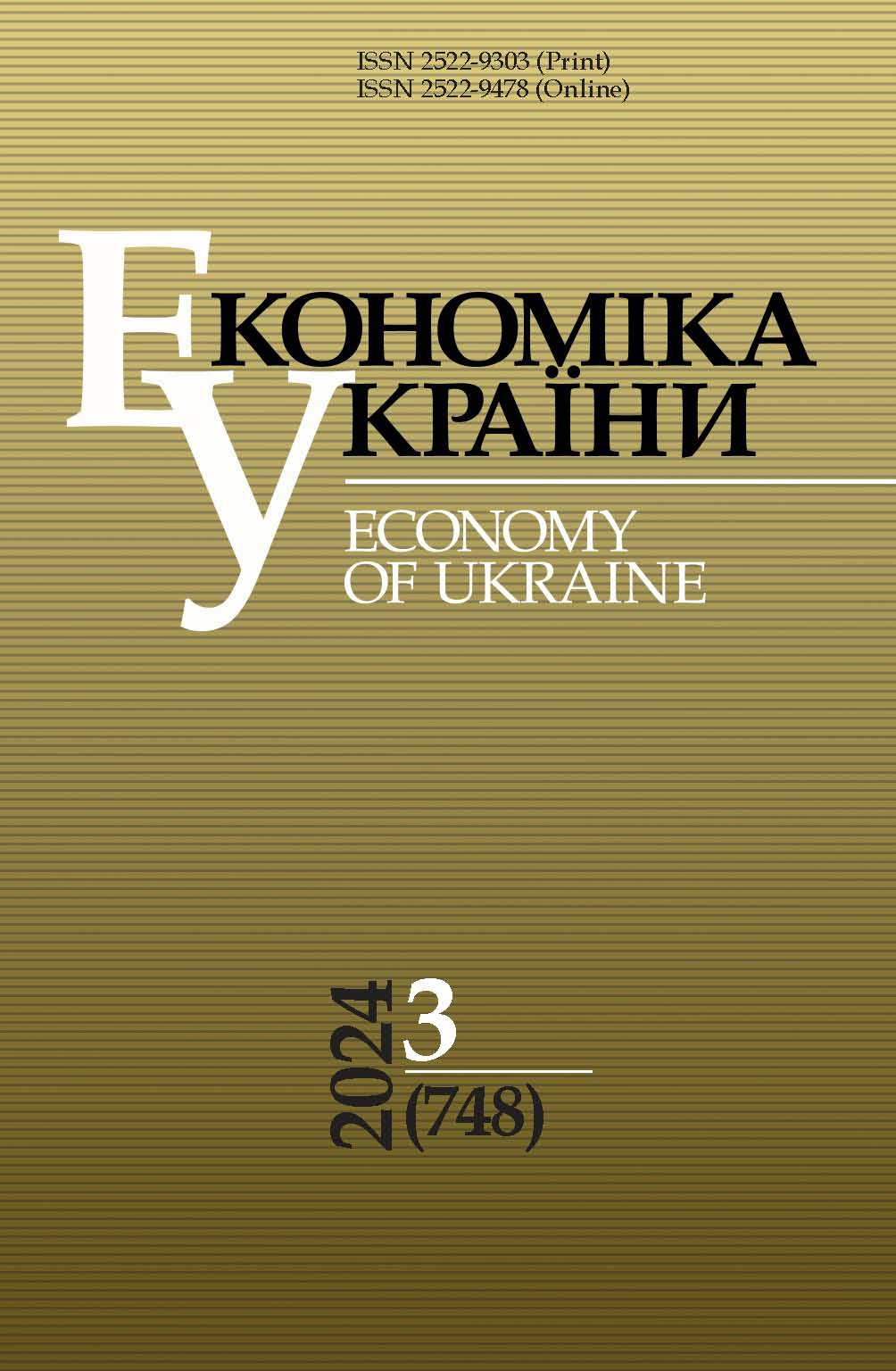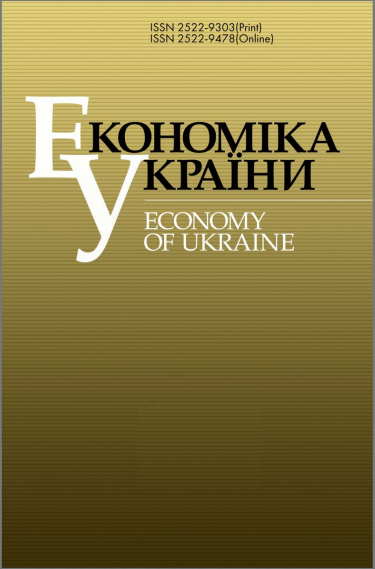ASSESSMENT OF THE TAX BURDEN ON LABOR INCOME OF HIGHLY QUALIFIED EMPLOYEES: EXPERIENCE OF DEVELOPED COUNTRIES AND CONCLUSIONS FOR UKRAINE
DOI:
https://doi.org/10.15407/economyukr.2024.03.037Keywords:
Human Resource Tax Analyzer model; personal income tax; unified social contribution; effective average tax rate; labor income; highly qualified employeeAbstract
Differences in the specifics of taxable labor income formation, tax rates on labor and pension income, the availability of tax deductions and tax credit, as well as in the amount and present value of social contributions cause different levels of tax burden on a highly qualified employee in different countries. To compare the levels of the tax burden on highly qualified employees, the Human Resource Tax Analyzer model developed by specialists of the Leibniz Centre for European Economic Research (ZEW) is used. Central to the model is an effective average tax rate (EATRl) indicator, which is calculated as the difference between employee’s total remuneration before tax and the present value of income after paying taxes and social security contributions, divided by employee’s total remuneration before tax. The sequence and results of calculating the effective average tax rates on the labor income of highly qualified employees in 2023 in Ukraine, where a "flat" personal income tax rate is in effect, and in Austria, where a graduated progressive tax rate is used for seven groups of labor income, are presented. The approbation of the model for Ukraine was carried out taking into account the influence of the macroeconomic environment, which reduces the present value of pension income of highly qualified employees. According to our estimates, EATRl, taking into account macro-financial conditions in Ukraine in 2023, was 39.5%, which is lower than the average level of the tax burden on the labor income of highly qualified employees in developed countries. At the same time, this is significantly higher than the indicators of the EU countries neighboring Ukraine – Hungary, Poland, and Slovakia. The EATRl indicator, calculated on the basis of the Human Resource Tax Analyzer model, can be used to justify prospective changes to the system of personal income taxation and the collection of compulsory social contributions in Ukraine in the context of European integration and addressing certain migration challenges.
References
Moser, P., Voena, A., Waldinger, F. (2014). German Jewish émigrés and US invention. American Economic Review. Vol. 104. No. 10. P. 3222-3255. https://doi.org/10.1257/aer.104.10.3222
Massey, D., Arango, J., Hugo, G., Kouaouci, A., Pellegrino, A., Taylor, J. (1993). Theories of International Migration: A Review and Appraisal. Population and Development Review. Vol. 19. No. 3. P. 431-466. https://doi.org/10.2307/2938462
Pyshchulina, O., Yurchyshyn, V. (2023). The impact of migration processes on the post-war recovery of Ukraine and the migration policies of the EU and EAP countries. Yu. Yakymenko (ed.). Razumkov Centre. URL: https://razumkov.org.ua/images/2023/10/25/2023-Pyshchulina-MIGRACIA.pdf [in Ukrainian].
Mendoza, E., Razin, A., Tesar, L. (1994). Effective Tax Rates in Macroeconomics: Cross-Country Estimates of Tax Rates on Factor Incomes and Consumption. Journal of Monetary Economics. Vol. 34. Iss. 3. P. 297-323. https://doi.org/10.1016/0304-3932(94)90021-3
Lunina, I., Frolova, N. (2007). Efficiency of consumption taxation in Ukraine. Finance of Ukraine. No. 1. P. 17-27. URL: http://nbuv.gov.ua/UJRN/Fu_2007_1_3 [in Ukrainian].
Frolova, N. (2014). The tax load on a labor, a capital, and the final consumption under conditions of the action of Ukraine’s tax code. Economy of Ukraine. 57. 8(633). 47-60. URL: http://nbuv.gov.ua/UJRN/EkUk_2014_8_5 [in Ukrainian].
Sokolovska, A. (2008). Methodological and method aspects of determining the tax burden on labor, capital, and consumption. Finance of Ukraine. No. 1. P. 65-76. URL: http://nbuv.gov.ua/j-pdf/Fu_2008_1_7.pdf [in Ukrainian].
Tax burden dynamics in Ukraine in the context of tax reform implementation (2013). T.I. Yefymenko, A.M. Sokolovska (Eds.). Academy of Financial Management. 494 p. URL: https://afu.kiev.ua/getfile.php?page_id=450&num=5 [in Ukrainian].
Elschner, Ch., Schwager, R. (2004). A Simulation Method to Measure the Tax Burden on Highly Skilled Manpower. ZEW Discussion Papers. No. 04-59. https://doi.org/10.2139/ssrn.586403
Borjas, G. (2005). The labor-market impact of high-skill immigration. American Economic Review. Vol. 95. No. 2. P. 56-60. https://doi.org/10.1257/000282805774670040
Cerna, L. (2013). Understanding the diversity of EU migration policy in practice: The implementation of the blue card initiative. Policy Studies. Vol. 34. Iss. 2. P. 180-200. https://doi.org/10.1080/01442872.2013.767587
Elschner, Ch., Schwager, R. (2005). The Effective Tax Burden on Highly Qualified Employers. ZEW Economic Studies. Vol. 29. https://doi.org/10.1007/3-7908-1623-X_3
Fischer, L., Heckemeyer, J., Spengel, Ch., Steinbrenner, D. (2021). Tax policies in a transition to a knowledge-based economy: The effective tax burden of companies and highly skilled labour. ZEW Discussion Papers. No. 21-096. http://dx.doi.org/10.2139/ssrn.3996168
Downloads
Published
How to Cite
Issue
Section
License
Copyright (c) 2024 Publisher PH "Academperiodyka" of the NAS of Ukraine

This work is licensed under a Creative Commons Attribution-NonCommercial-NoDerivatives 4.0 International License.



